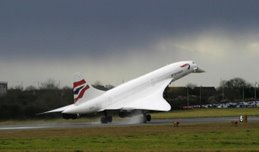SOFIA, BULGARIA - JUNE 2006

"THE NATIONAL OPERA HOUSE - You probably wouldn't believe this is an Opera House, but it actually is! Situated on the corner of Rakovski Street and Dondukov Boulevard (difficult to catch without a wide angle) it has ten columns lined up along the main facade. The foyers, balconies and large hall are stunning! The theatre was destroyed in 1944 and rebuilt after the war"

"SS. CYRIL & METHODIUS NATIONAL LIBRARY was founded on 4 April 1878. Cyril and Methodius, the Apostles of the Slavs, were two brothers born in Thessalonica, in 827 and 826 respectively. In 863, when the Moravians wanted someone who could conduct Divine service in the Slavonic language, Cyril and Methodius were chosen for the job. Cyril invented an alphabet and, with the help of Methodius, translated the Gospels and the necessary liturgical books into Slavonic. That was the origin of the Cyrillic alphabet"

"THE SOFIA UNIVERSITY was founded on 1 October 1888. The building was constructed between 1924 and 1934. The University has 14,000 students, a university library, a university press, a computer centre, a sports centre as well as other structures"

"PARLIAMENT - The building was constructed in three stages from 1884 to 1928. A motto inscribed on its main facade reads «Union makes strength»"

"PARLIAMENT SQUARE - From left to right: the Bulgarian Academy of Sciences, the Alexander Nevski Cathedral, the Parliament and the Monument to the Tsar Liberator, commemorating Alexander II's decisive role in the Liberation of Bulgaria from Ottoman rule during the Russo-Turkish War of 1877-78"


"EMBASSIES - Some of Sofia's most beautiful historic houses are occupied by foreign embassies. The Austria and Italian embassies are just two examples"

"THE CENTRAL MILITARY CLUB is a multi-purpose culture building located on Tsar Osvoboditel Boulevard. The foundation stone was laid in 1895 and the building was concluded in 1907. The building has three storeys and features a coffeehouse, an art gallery, a number of halls, as well as a concert hall with 450 seats"

"THE NATIONAL BANK OF BULGARIA was established on January 25th, 1879. Its headquarters' building on Battenberg Square was built between 1934 and 1939 in the neoclassical style. It spreads over an area of 3,700 square metres"

"THE NATIONAL ARCHAEOLOGICAL MUSEUM occupies the building of the largest and oldest former Ottoman mosque in the city, built around 1474 under Mehmed II. The museum was officially inaugurated in 1905 and has five exhibition halls: Central, Prehistory, Middle Ages, Treasure, and a special temporary exhibition"

"THE FORMER PARTY HOUSE is located at the Largo, an architectural ensemble of three buildings, designed and built in the 1950s to become the city's new representative centre. It is now regarded as one of the prime examples of Socialist Classicism architecture and consists of the former headquarters of the Bulgarian Communist Party (picture) and two side edifices: one accommodating the TZUM department store and the Council of Ministers (next picture) and another occupied by the President's Office, the Sheraton and the Ministry of Education"

"TZUM, abbreviated from Tsentralen universalen magazin (Central Department Store), officially opened in 1957 with an area of 20,570 square metres. It underwent major reconstruction in 1986 and, by 1988, 120,000 people went through the store daily. After 1989, TZUM was transformed to become a place for expensive boutiques and the daily number of customers felt to 7,000. Another reconstruction followed in 1999–2000. Later, brands like Timberland, Nautica, ADIDAS, Tommy Hilfiger, Swarovski, Nike, etc., had stores there, however attracting only 12,000 people per day"

"THE SHERATON, sandwiched between the Presidential Palace and the central square that feeds into Vitosha (the city's best-known shopping street), is housed in one of Sofia's landmarks. It also overlooks the intersection between the main Tsar Osvoboditel and Maria Luiza Boulevards"

"THE CATHOLIC CATHEDRAL OF SAINT JOSEPH is the co-cathedral of the Diocese of Sofia and Plovdiv, together with the Cathedral of St. Louis of France in Plovdiv. Destroyed during World War II, the foundation stone of the new cathedral was laid personally by Pope John Paul II in 2002 at its former location, and it was inaugurated on May 21st, 2006. The Cathedral has 350 seats, shelters a total of about 1,000 people, is 23 m long, 15 m wide and 19 m high, has a 33 m belfry and four electronic bells"

"THE SOFIA PUBLIC MINERAL BATHS - Sofia is a city known for its mineral springs. The Baths were built in the early 20th century near the former Turkish bath (then destroyed) and were used as the city's public baths until 1986. The building was designed in the Vienna Secession style, but integrating Bulgarian, Byzantine and Eastern Orthodox ornamental elements. Damaged several times, it was reconstructed and cleaned and is planned to accommodate the Museum of Sofia and a healing centre"

"THE CENTRAL MARKET HALL, a covered market located on Marie Louise Boulevard, was opened in 1911. The construction of the Neo-Renaissance building, which spreads over 3,200 square metres, began in 1909 and took two years to complete. It features also elements of Neo-Byzantine architecture and Neo-Baroque. The façade is known for its relief of the coat of arms of Sofia above the main entrance"

"THE NATIONAL PALACE OF CULTURE, opened in 1981, is the largest multifunctional conference and exhibition centre in South-eastern Europe (123,000 square metres). In July 2005, the Palace was proclaimed the best congress centre in the world by the International Organization of Congress Centres. Curiously, more than 10,000 tons of steel were used for the construction of the Palace - 3,000 more than the Eiffel Tower"

"THE NATIONAL STADIUM, named after Bulgarian national hero Vassil Levski, is the country's largest stadium (43,632 seats) and is eligible to host UEFA Cup final football matches. It was officially opened in 1953 and reconstructed in 1966 and 2002. The stadium offers also aerobics, basketball, boxing, fencing, gymnastics, judo, and table tennis halls, as well as two conference halls and three restaurants"























































































